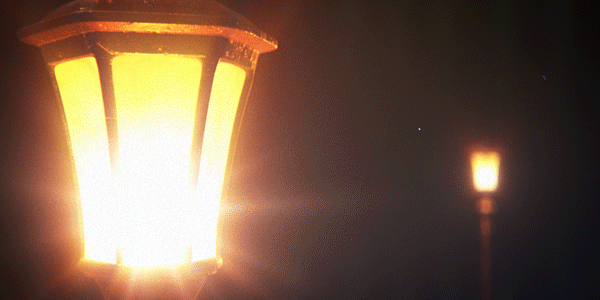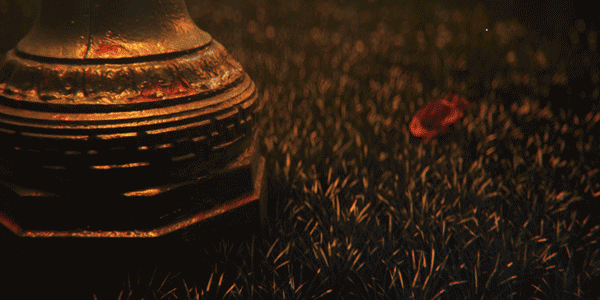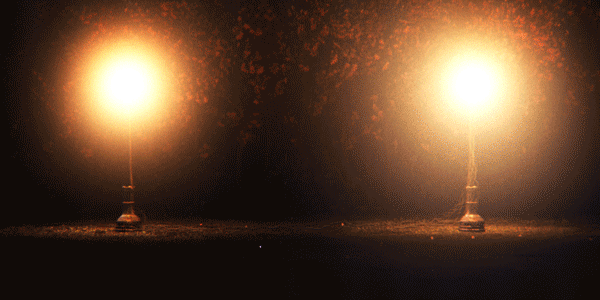Directed & Animated by Paul DeSilva
Composer: Michael Troyer
Sound Design: Brayden McCluskey
Toronto International Film Festival 2014 - Official Selection
Stockholm International Film Festival 2014 - Winner, iFestival Competition
CONCEPT
This 3D animated short film was created over the course of a year. The 3D work was done in Maya, and the compositing in After Effects. I was looking for a project that I could do mostly solo in my spare time, so that was a consideration while I was developing the story (limiting the amount of animation required, keeping the render times down, etc.).
Conceptually, the film grew from a dream I'd had in which I was a lamppost in a park at night and witnessed a little girl drop a necklace in the grass at my base before running off to her home. I bent to pick it up with glowing, disembodied hands but, being bolted to the ground, I was unable to return it to her. The dream was memorable particularly for its stark imagery. A year or so later, I began to develop the concept further. Having recently gotten out of a significant relationship, I merged the imagery of that dream with the emotion of my current situation to form the primary scenario. In this way, the film became a self-induced therapy to release myself from my negative emotional state and upon completion, I felt catharsis.
STORYBOARDS
These were the original storyboards I made. You can see that I ended up removing the shots around the closeup of the bulb (they didn't progress the story), and the leaves that fill the air at the end (it seemed a little too heavy-handed). Otherwise, I tried to stay as close to the boards as possible, something almost required in animation.
REFERENCE
I wanted something more tangible than the fleeting memory of a year old dream from which to draw visual inspiration. The first thing to do was to shoot reference. I went to a park at night and shot a roll of 35mm 200 ISO film roughly matching some of the shots from my storyboards. I referred to these images constantly to get my basic lighting and color palette nailed down and make it look somewhat real, then took artistic liberties to push it into the realm of the surreal.


LAMP MODEL
Being more of a lighting and compositing artist, I knew the lamp model would be the most difficult thing to make. It would also be the most scrutinized. I decided to use 123D catch, which is a great free app that can extrapolate a 3D model from photos of an object. After two failed attempts (not enough images, too directional lighting), these were the final images that produced the model in the film.
And here was the model that was produced. It's obviously unfit for any sort of animation, but perfect for a static object. It also gets automatically unwrapped (not well) and the photos textured onto the object, which saved me a ton of time.
COMPOSITING BREAKDOWN
I constantly worked with both Maya and AE both open, jumping back and forth until I had something coming out of 3D that I knew would work in comp. I didn't render passes because I tweaked as I worked and ended up only rendering 5 layers, lamp, grass, trees, leaf, and a depth pass. Click through the images to see a buildup of the comp to final image.
SOUND & MUSIC
Once the visuals were locked in place, I passed the film to friends who graciously donated their skills to the film. Brayden McCluskey did the sound design, and Michael Troyer composed the score for the film.
The sound design plays heavily on the 60hz hum that lights generate. We decided to offset the two lights so they each had a distinct frequency, 58.27hz (Bb) for the first light, and 61.74 (B) for the second light. The two frequencies heard in tandem produce a binaural beating effect which serves two purposes. First, it plays up the idea that the two lamps are having a conversation. Second, it instills a feeling of unease in the viewer and can have a sort of hypnotic effect. When the second lamp shatters and goes silent, the loss of that beating effect also feels jarring and you are suddenly aware that only one tone remains, alone. Also, when the second light is reignited at the end to be now twice as bright, we are left with a perfect 60 Hz hum, a combination of the both of them.
My original idea for the score was to write a simple piano piece that would be somewhat low key, but everything I was writing seemed too sentimental. When I passed it to Michael Troyer and he came back with this synth-heavy, almost creepy piece, I knew he had perfectly captured the mood of the film. The final score was barely altered from that first version that he gave me and I still think it is the perfect piece for the film.
RECEPTION
The film had its world premiere at the Toronto International Film Festival, which was an unexpected achievement for my first film. From that, I was contacted to show at the Stockholm International Film Festival in which the film won best short in the iFestival Competition.
If you have any questions about it, feel free to email me at paul.desilva@gmail.com and I'll be happy to respond.
PROMOTIONAL GIFSET


























